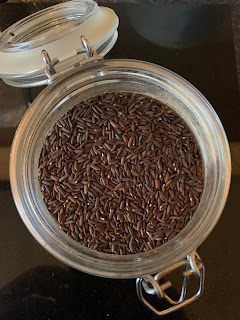Foraged Salad Herbs
 In the garden the all year main wild leaves I enjoy are firstly Dandelion leaves. Dandelion greens can be eaten cooked or raw and are an excellent source of vitamins A, C, and K. They also contain vitamin E, folate, and small amounts of other B vitamins ( 1 ). What's more, dandelion greens provide a substantial amount of several minerals, including iron, calcium, magnesium, and potassium.
In the garden the all year main wild leaves I enjoy are firstly Dandelion leaves. Dandelion greens can be eaten cooked or raw and are an excellent source of vitamins A, C, and K. They also contain vitamin E, folate, and small amounts of other B vitamins ( 1 ). What's more, dandelion greens provide a substantial amount of several minerals, including iron, calcium, magnesium, and potassium.Next favourite is Chickweed, this grows abundantly all year round and makes a wonderfully tasty salad leaf. Just strip the tougher stalks and use like watercress. It contains vitamins A, D, B complex, C, rutin (a bioflavinoid), calcium, potassium, phosphorus, zinc, manganese, sodium, copper, iron and silica. In comparison with spinach, chickweed holds up extremely well. It's got just as much iron, along with other nutrients.
Spring/ Summer is a great time to get out for some fresh air and collect some of natures bountiful ingredients while you're at it. The first of the year is Wild Garlic (Ramsons), the leaves of which make a great pesto for pasta or spread on crostini (toasted thinly sliced rustic bread). The flower buds and open flowers will add another dimension and flavour to any salad, imparting their fresh garlicky flavour.The next herb I adore is Garlic Mustard (Jack by the Hedge), which grows quite tall and in large groups, especially near hedgerows. the lower leaves provide a plentiful delicate salad leaf and the tops and flowers have slight mustard and garlic flavour.
There are two main types of Sorrel available, Rumex Acetosa with its long arrowhead-shaped leaves found in damp grassy areas or Wood Sorrel (Oxalis) which has its three heart-shaped leaves and is found in most forests. Sorrel gives a wonderfully sharp, lemon flavour which can be used sparingly in salads or used in a simple creamy risotto.
Lastly, I'd like to include Hawthorn, this is used as hedgerows everywhere and is never hard to find. Later in the year, I collect the fruits for many uses but that's another story. Early in the year the young shoots and leaves, whilst still tender, have a fresh hazelnut flavour with a mild bitter tang. These leaves give not only flavour but much more texture to a salad.



Comments
Post a Comment